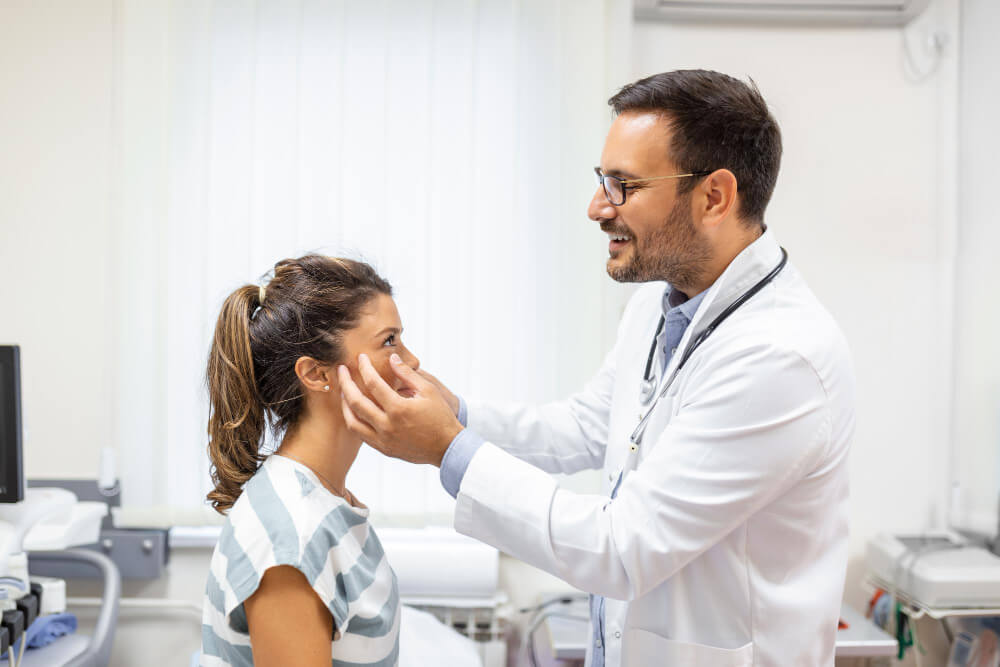Seeing Red? Understanding and Treating Pink Eye (Conjunctivitis)
Pink eye, a frequent visitor for people of all ages, is an inflammation of the conjunctiva, the thin, transparent membrane lining the eyelids and covering the white part of the eyeball. This inflammation causes the blood vessels in the conjunctiva to become dilated and visible, leading to the characteristic reddish or pink appearance of the eye. While pink eye can be a nuisance and cause discomfort, it is usually not a serious condition and resolves on its own within a few days. However, understanding the different types of pink eye, their causes, and available treatment options can help you manage this eye irritation effectively.
Types of Pink Eye (Conjunctivitis)
Viral Pink Eye:
The most common type of pink eye is caused by a virus, such as the common cold virus. This type is highly contagious and can spread easily through direct contact with infected eyes or contaminated objects. Symptoms typically include redness, itching, watery discharge, and a gritty sensation in the eye.
Bacterial Pink Eye:
Bacterial pink eye is less common than viral pink eye but can be more persistent. It is caused by bacteria that often enter the eye through contaminated hands or objects. Symptoms of bacterial pink eye may include redness, pus-like discharge, crusting of eyelashes, and a feeling of having something stuck in the eye.
Allergic Pink Eye:
Allergic pink eye is triggered by exposure to allergens like pollen, dust mites, or pet dander. This type is not contagious and typically affects both eyes. Symptoms include redness, itching, watering, and burning sensation in the eyes.
Giant Papillary Conjunctivitis (GPC):
This type of pink eye is often associated with wearing contact lenses for extended periods, particularly soft lenses. Symptoms may include redness, itching, and a feeling of having something stuck under the eyelid.
Signs and Symptoms of Pink Eye

While the most prominent sign of pink eye is a reddish or pink discoloration of the whites of the eyes, other symptoms can vary depending on the underlying cause. Here’s a breakdown of some common symptoms:
- Redness: This is the hallmark symptom of pink eye, affecting the entire white part of the eyeball or localized areas.
- Itching: Pink eye, especially allergic pink eye, can cause significant itching in one or both eyes.
- Watery discharge: A clear, watery discharge is common with viral and allergic pink eye.
- Pus-like discharge: A thick, yellow, or greenish discharge is more characteristic of bacterial pink eye.
- Gritty sensation: This feeling can occur with any type of pink eye, as if something is stuck in the eye.
- Burning sensation: This symptom is more common with allergic pink eye.
- Swollen eyelids: Eyelids may be slightly puffy, particularly with allergic pink eye.
- Blurred vision: Blurred vision is uncommon with pink eye but may occur in some cases.
Treatment for Pink Eye
The treatment for pink eye depends on the underlying cause.
- Viral Pink Eye: Viral pink eye typically doesn’t require specific treatment and resolves on its own within a few days. Artificial tears or cool compresses can help soothe eye irritation. Antibiotic eye drops are not effective for viral pink eye.
- Bacterial Pink Eye: This type of pink eye is treated with antibiotic eye drops prescribed by a healthcare professional. It’s crucial to complete the entire course of medication as directed, even if symptoms improve, to ensure complete eradication of the bacteria.
- Allergic Pink Eye: Treatment for allergic pink eye focuses on managing the underlying allergy. Antihistamine eye drops or oral medications may be prescribed to reduce itching and inflammation. Avoiding exposure to allergens whenever possible is also crucial.
- Giant Papillary Conjunctivitis: Treatment for GPC often involves switching to daily disposable lenses or wearing glasses more frequently. Eyelid hygiene practices and artificial tears can also help manage symptoms.
